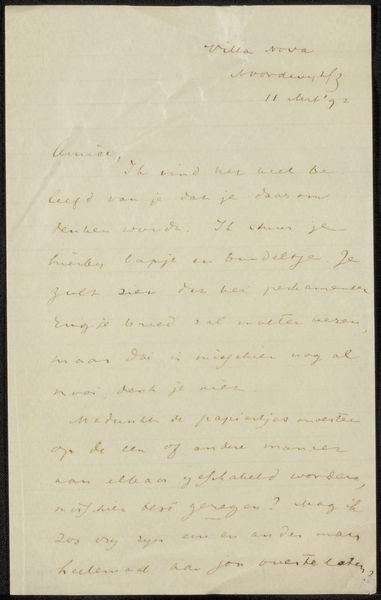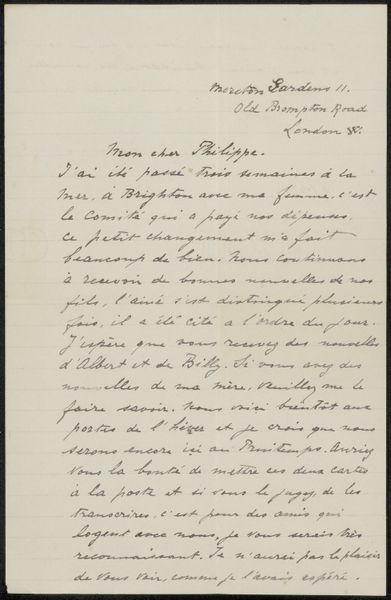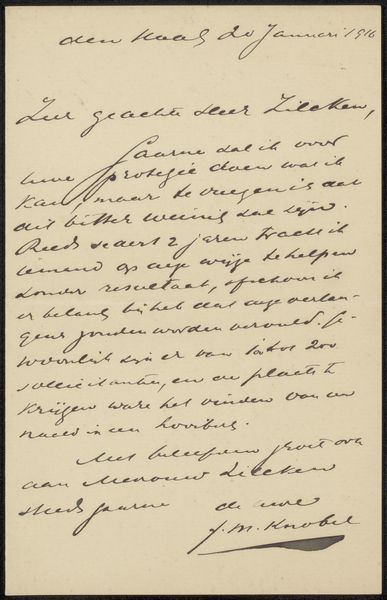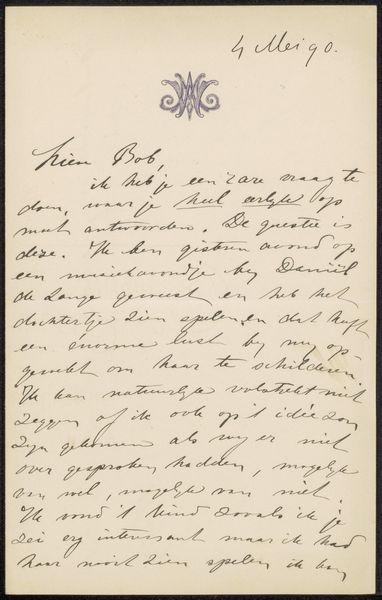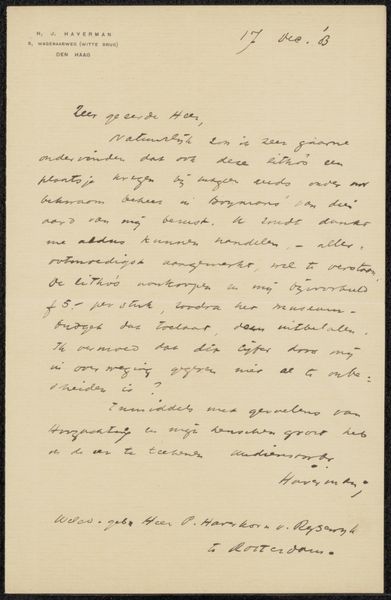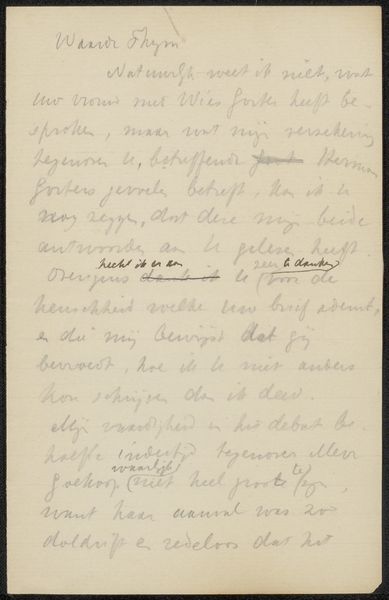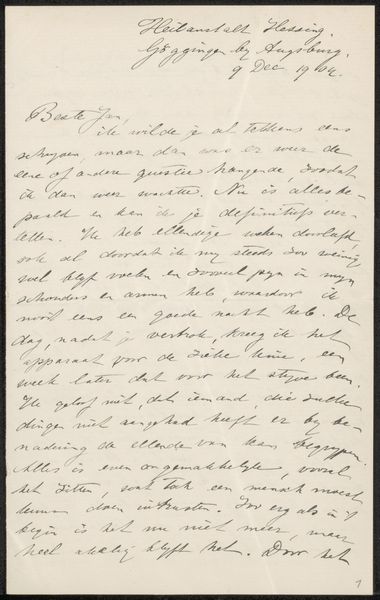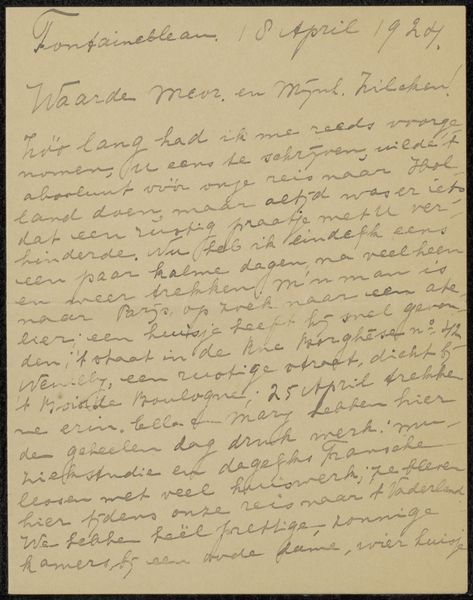
drawing, paper, ink
#
drawing
#
hand-lettering
#
hand drawn type
#
feminine typography
#
hand lettering
#
paper
#
personal sketchbook
#
ink
#
hand-drawn typeface
#
sketchbook drawing
#
hand-drawn
#
delicate typography
#
sketchbook art
Copyright: Rijks Museum: Open Domain
Curator: We're looking at "Brief aan Philip Zilcken," believed to be from 1919 by E.J. Tanning. It’s ink on paper, essentially a drawn letter. Editor: Immediately, I sense fragility. The handwriting is elegant, but also conveys a deep personal loss and resilience emerging after a traumatic experience. Curator: The social context of its creation is crucial here. This was likely written shortly after the end of the First World War. Think about the accessibility of materials, perhaps the very scarcity influenced her delicate typography and careful rationing of space. The embodied labor is palpable; this wasn't just writing, it was *making*. Editor: Absolutely. The act of handwriting itself, after the war, feels significant. The flowy, almost romantic style, contrasts so sharply with the brutal realities alluded to. It reminds me of letters from the front—a tangible link across devastating experiences, holding hopes and anxieties. Consider the address: Rue de Livourne, Brussels. Did the location add a symbolic meaning, a place of reunion and possibly refuge? Curator: Precisely! Furthermore, analyzing the ink itself might reveal its sourcing, maybe locally produced in a wartime economy with limited availability. Even the paper's texture and quality, and the specific tools used, tells us much about Tanning’s economic situation, social access, and therefore a piece of her identity. Editor: Yes, the script embodies that—the curves, flourishes... "Mon cher Ami," and then that harrowing revelation, “une partie de mes meubles ont été enlevés par les boches..." It’s incredibly potent; the personal effects speak volumes of identity being violated during occupation. There’s even the hint that the home itself has been transformed against the original owners’ wills—a sort of symbol for the transformation war wreaks. Curator: This changes the concept of a sketchbook. Tanning wasn't sketching nature scenes or abstract compositions; she was actively communicating and sharing about living circumstances. She uses personal handwriting to portray complex emotions, in effect combining work with an aesthetic method that carries inherent symbolism about communication in the aftermath. Editor: This examination reminds us of war’s reach far beyond the battlefield. This artifact preserves echoes of hope for recovery—the rebuilding of domestic space and the preservation of connections threatened by conflict and separation. It is quite a potent message to share even now. Curator: Indeed, understanding production opens insight not just to aesthetic intentions but how circumstances affect what one makes.
Comments
No comments
Be the first to comment and join the conversation on the ultimate creative platform.

